Join More Than 50,000+ Subscribers and get latest camera news and rumors
NEW CAMERA VIDEOS ON YOUTUBE
|
By admin, on October 21st, 2013
 Sony A7 vs Sony A7r comparison review – Just few days ago Sony announced A7 and A7r fullframe mirrorless camera with excellent core specification, Sony is shaking the camera world from 2012 by announcing class leading innovative products like X series compact cameras, smartphone attachable lens-Style Camera and now FF Mirrorless. Sony A7 vs Sony A7r comparison review – Just few days ago Sony announced A7 and A7r fullframe mirrorless camera with excellent core specification, Sony is shaking the camera world from 2012 by announcing class leading innovative products like X series compact cameras, smartphone attachable lens-Style Camera and now FF Mirrorless.
Now take a look at the major specification difference in the table below
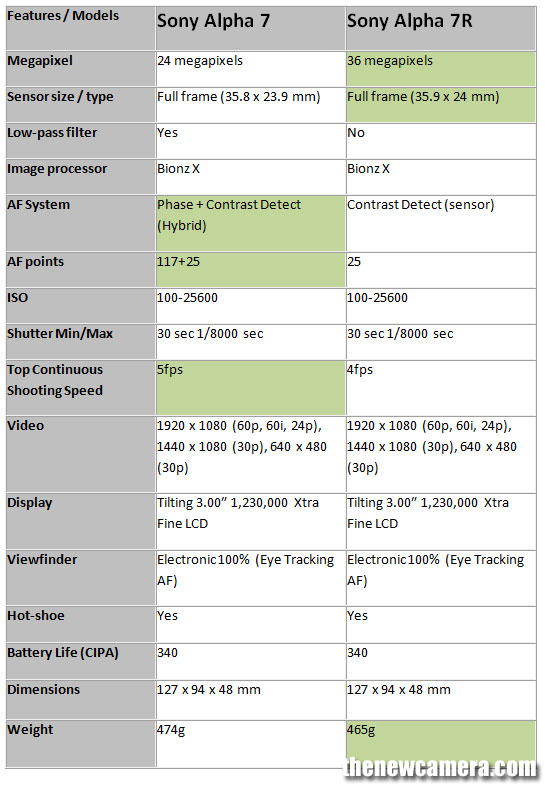
The Major difference we see in both the camera are
#1 Sensor
#2 AF System
#3 Electronic front curtain shutter in A7
#4 Fast top continuous shooting speed in A7
#5 Price difference
#1 Sensor: The Sony A7 features 24 Megapixel FF sensor and on the other hand Sony A7r features 36 Megapixel FF sensor, Obviously the sensor of A7 will give cleaner result at high ISO range due to larger pixels / photodiode inside it.
#2 AF system: as we have said earlier Sony A7 features Hybrid AF system that combines Phase + Contrast detect system, 117 phase AF points + 25 contrast detect AF points available in A7, on the other hand Sony A7r features Contrast detect system with 25 AF points only, naturally AF system of A7 is fast compared to A7.
#3 electronic front curtain shutter in A7: The A7 comes with electronic front curtain shutter, so you get (better) 1/250 flash sync speed with A7 on the other side A7R is limited to 1/160.
 #4 Fast top continuous shooting speed in A7: Due to less resolution in A7 the image processor is able to process more files at a given time compared to A7r. #4 Fast top continuous shooting speed in A7: Due to less resolution in A7 the image processor is able to process more files at a given time compared to A7r.
#5 Price: Sony A7 cost $600 less than Sony A7r.
Verdict: We recommend you to buy Sony A7, since A7 features better AF system, better low-light performance, Electronic front curtain shutter, bit Fast continuous shooting speed and $600 approx less price, A7r only recommended for Landscape, Architecture and Fashion photographers, those who have more control over light and don’t need fast AF system.
Buying Options
Sony A7 [Body Only] – $1,698.00 – Amazon | B&H
Sony A7 w/ 28-70mm lens – $1,998.00 – Amazon | B&H
Sony A7r @ $2,298.00 from Amazon | B&H
By admin, on October 20th, 2013
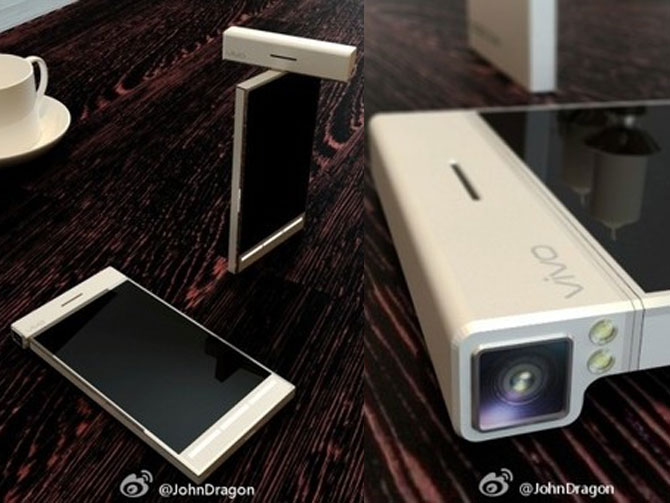 According to latest rumors coming from Phonearena, the upcoming Vivio Phone will feature Nikon camera module and Expeed processor (version not known yet), the rumors doesn’t end up here the we have also seen few days ago that upcoming Nexus phone may feature According to latest rumors coming from Phonearena, the upcoming Vivio Phone will feature Nikon camera module and Expeed processor (version not known yet), the rumors doesn’t end up here the we have also seen few days ago that upcoming Nexus phone may feature
Nikon is trying to make a space in smartphone world due to shrinking compact camera market, however Sony already surprised us few days ago by announcing Sony DSC-QX10/B and QX100 Smartphone Attachable lens-Style Camera few days ago.
src- phonearena
By admin, on October 20th, 2013
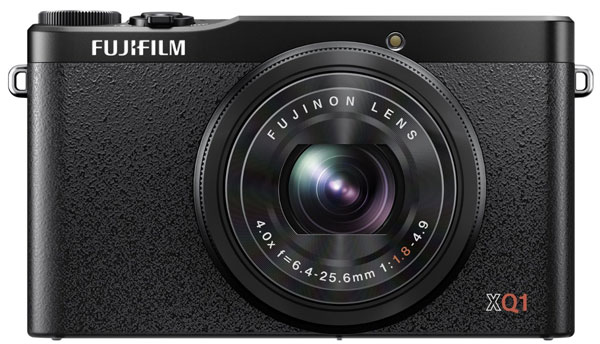
Fujifilm XQ1 Samples are available now, the camera features 12MP 2/3″ X-Trans CMOS Sensor and Bright Fujinon 4x Optical Zoom f/1.8-4.9 Lens, the camera Hybrid CMOS AF helps to lightning Fast AF in still and video mode, the XQ1 comes with built-in WiFi and Film Simulation and Advanced Filters.
Fujifilm XQ1 official Sample Images
More Samples will be added soon | forward gallery links to contact@thenewcamera.com
By admin, on October 19th, 2013
 Nikon D5300 recently announced by Nikon, the Nikon D5300 features same sensor as Nikon D7100 sensor + no OPLF (optical Low-Pass Filter), as a result the images will be super sharp even when viewed at 100%. Nikon D5300 recently announced by Nikon, the Nikon D5300 features same sensor as Nikon D7100 sensor + no OPLF (optical Low-Pass Filter), as a result the images will be super sharp even when viewed at 100%.
Nikon D5300 Samples Gallery
Nikon D5300 Samples at Nikon USA website
Also see – Nikon D5300 Price, Press Release Full Specification and Videos
Nikon D5300 Price – $795 body only – Buy / Pre-order from Amazon | B&H
By admin, on October 18th, 2013
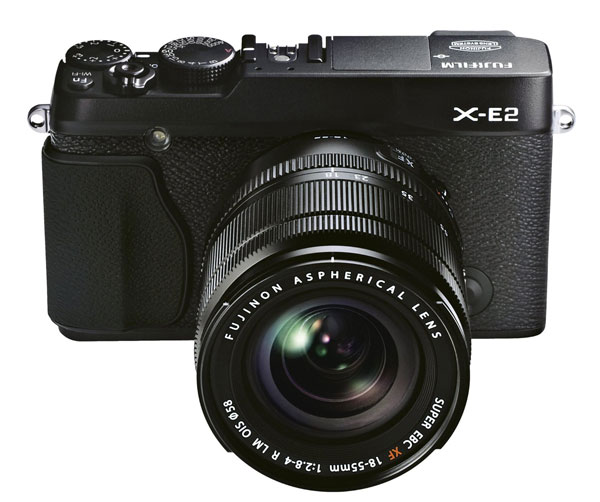 The Fujifilm X-E2 announced today and features same sensor as X100S camera / 16MP X-Trans CMOS II sensor with EXR Processor II advance Phase + contrast detection based AF system, according to Fujifilm X-E2 features world fastest AF speed of 0.08 seconds, the X-E2 doesn’t have optical low pass filter, so you get high resolution images with excellent color and contrast. The Fujifilm X-E2 announced today and features same sensor as X100S camera / 16MP X-Trans CMOS II sensor with EXR Processor II advance Phase + contrast detection based AF system, according to Fujifilm X-E2 features world fastest AF speed of 0.08 seconds, the X-E2 doesn’t have optical low pass filter, so you get high resolution images with excellent color and contrast.
Fujifilm X-E2 Major Features
- 16.3MP, APS-C, X-Trans II CMOS Sensor
- EXR Processor II
- 3.0″ 1,040k-Dot LCD Monitor
- 0.5″ 2,360k-Dot OLED Viewfinder
- Full HD 1080p Video Recording at 60 fps
- Built-In Wi-Fi Connectivity
- Continuous Shooting up to 7 fps
- Intelligent Hybrid AF System
- Digital Split Image and Focus Peaking
- Film Simulation and Advanced Filters
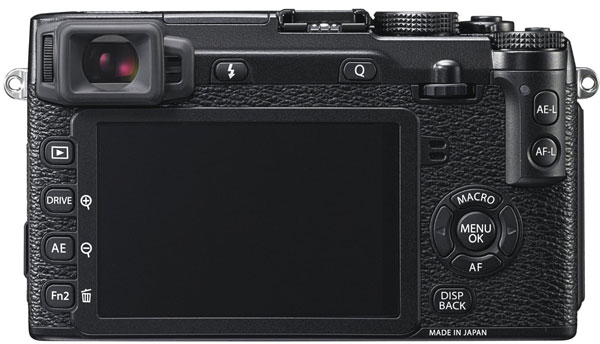
other new features added to fuji is Lens Modulation Optimizer (LMO) it work to deliver edge-to-edge image quality with incredible sharpness, the X-E2 shoots Full HD video (1920×1080) up to 60fps and the AF tracking performance in movie mode has been improved with good focusing speed, accuracy and smoothness on the rear side we also have 3-inch (1.04 million dot) premium clear LCD (High contrast, High Brightness and Wide viewing angle).
Fujifilm X-E2 Price – $999.00 [body only] – Pre-order Fujifilm X-E2 from Amazon | B&H
Main features of the FUJIFILM X-E2
Building on the global success of the highly acclaimed FUJIFILM X-E1 — awarded 2013′s Best Expert CSC by the Technical Image Press Association — the X-E2 takes image quality to a dynamic new level that is comparable with full-frame cameras. It delivers even more beautiful color reproduction, higher definition image capture, and that world’s fastest AF speed of 0.08 seconds**.
This is achieved by more than doubling the processing speed*** of the EXR Processor II. It is able to harness the information taken from over 100,000 phase detection pixels incorporated in the X-Trans CMOS II. The hybrid AF also combines phase detection AF and contrast AF to ensure accuracy when shooting low-contrast subjects and dark scenes.
The 16.3 million pixels APS-C sized X-Trans CMOS II Sensor incorporates an original color filter array. This eliminates the need for an optical low pass filter that typically minimizes moiré but does so at the expense of resolution. Instead, the X-Trans CMOS II sensor can capture unfiltered light from the lens for an unprecedented level of image clarity.
Quality is further improved by the Lens Modulation Optimizer (LMO). Its high-precision processing of the various lens parameters, as well as data from the screen centre to the edges, corrects diffraction blur when shooting with a stopped down aperture and compensates for the slight blurring in the lens periphery. The result is edge-to-edge image quality with incredible sharpness. LMO will be compatible with every XF lens.
The X-E2′s prestigious feel continues with the combination of aperture ring on the lens and shutter dial on the top of the body as seen in its predecessor. This allows full shooting control while keeping your eye to the viewfinder. The X-E2 is available in solid black or two-tone black and silver.
Fast and accurate focusing
Thanks to the X-E2′s ultra-fast response you won’t miss a photo opportunity. In addition to achieving a world’s fastest AF, the X-E2 has a rapid startup time (0.5 seconds*4), virtually no shutter lag (0.05 seconds), and high-speed continuous shooting of 7.0 fps (up to approx. 28 frames)*5.
Accurate and comfortable focusing comes courtesy of the hybrid AF. It combines a contrast AF that is strong in low light situations and a phase detection AF that provides high speed response and the camera automatically switches between the two AF modes. With the improvement of the detection algorithm, it’s easier than ever to focus on difficult low contrast subjects and horizontal striped patterns. Focusing continues right up to the moment the shutter is pressed half way during continuous AF.
Better image quality
The X-Trans CMOS II sensor controls moiré and false color generation by using an original color filter array with a highly randomized pixel arrangement. This removes the need for an Optical Low Pass Filter (OLPF) that degrades resolution. This is the same sensor as used in the highly acclaimed and award-winning FUJIFILM X100S.
Image quality is further increased by the inclusion of the first Lens Modulation Optimizer (LMO) for interchangeable lens cameras. The EXR Processor II image engine corrects even slight blur at the edges of the lens, as well as diffraction blur caused when narrowing the aperture. This advanced technology has been made possible by the integrated development of lens, sensor and processor and is based on the optical performance and characteristics of individual lenses. The camera is able to maximize the resolving and individual imaging power of each lens.
Ultimately, the sensor and engine combination achieves astonishing resolution, extends dynamic range, and reduces noise at high sensitivity. Fujifilm takes great pride in the resulting rich color reproduction and beautiful gradation of tones.
Superb functionality
The X-E2 continues to use the combination of a manually adjusted aperture ring and a shutter speed dial on the top plate that was well received by X-E1 owners. It allows the user to shoot and operate the camera without needing to look away from the viewfinder. Exposure compensation has been increased to the scope of ±3 EV. Every X-E2 owner can also customize up to 4 buttons on the top and back of the camera to suit their own shooting style.
Accurate and comfortable framing and focus checking is assured via the high resolution approx. 2.36 million dot OLED viewfinder and Fujifilm’s original optical design gives a distortion-free field of view. The premium clear LCD monitor size has been increased to 3.0” but the body is thinner. It has a high viewing angle and 1.04 million dot reinforced glass. The scratch-resistant surface reduces reflections and improves visibility, making it easier to check image quality.
Manual focus made easier
Manual focus has been made easier by the inclusion of Digital Split Image*6 technology. This helps the user achieve pin-sharp focusing by simply adjusting focus to line up the four stripes displayed in the central part of the live view and match the left and right split images. Focus Peaking Highlight, the highlighting of the outline in high contrast areas of the subject during focusing, further assists the user achieve critically sharp shots.
Improved movie performance
The X-E2 shoots Full HD video (1920×1080) up to 60fps and the AF tracking performance in movie mode has been improved with good focusing speed, accuracy and smoothness. Quick focusing on the subject is possible in a variety of situations, such as when panning and zooming, or when the subject moves closer to or further from the camera. Film simulation settings and exposure compensation (±2 EV) can be used during movie recording. Also a high bitrate (36Mbps) has been enabled.
Wirelessly transfer your images
You can easily transfer images wirelessly from the X-E2 to your smartphone or tablet after installing the free FUJIFILM Camera Application app. There are no troublesome ID and password settings; just press the Wi-Fi® button of the top of the camera and then add the images instantly to your blog or share them with friends on your social networking site. You can also use the X-E2′s built-in Wi-Fi to save your photos to your PC.
Creative modes
Choose your own image style with the Film Simulation Mode and recreate Fujifilm’s unique film heritage. By selecting from one of 10 variations you can shoot your images how you want them. Velvia gives vivid colors, ASTIA shows faithful smooth tone reproduction, PROVIA offers a natural all-rounder, while the softer Pro Neg.Std and sharper Pro Neg.Hi are perfect for portraiture. Sepia film simulation is also possible while creative black & white photography can be enjoyed using three different filter effects. Film simulation bracketing is also handy for generating three film styles from one shot.
Multiple Exposure imaging is achieved by combining two shots in one frame. After taking the first image, you can display it in either the EVF or LCD monitor as reference for taking the second image. This ability helps users produce highly creative results. In addition, there are eight Advanced Filter options for extra creativity, including Toy Camera, Miniature, Dynamic Tone, Pop Color, Soft Focus, High Key, Low Key, and Partial Color.
Extra functions
Through the in-camera RAW development function, a RAW image can be converted to JPEG without a computer, while 14bit RAW capture enables RAW conversion with richer tonality. The built-in Super Intelligent Flash gives the right amount of light for the scene, while overexposure when using a flash for macro photography is also controlled, helping the user capture nature-looking images.
Handy accessories
Perfectly fitting the X-E2′s compact and lightweight body, the BLC-XE1 is an authentic quality leather case. Including a separate cloth wrap for protection when storing the camera away. To further enhance the handling experience and performance you can add the HG-XE1 hand grip and one of three models of dedicated external flash.
FUJIFILM X-E2 Key features list:
- 16.3 million pixels APS-C X-Trans CMOS II Sensor
- Original color filter array to control moiré and false color without an optical low pass filter
- EXR Processor II
- FUJIFILM X Mount
- Lens Modulation Optimizer for improved image quality
- Extra high resolution 2.36 million dot OLED electronic viewfinder
- ±3 EV Exposure Compensation dial
- 3-inch (1.04 million dot) premium clear LCD (High contrast, High Brightness and Wide viewing angle)
- Built-in pop-up Flash (hot shoe attachment also available for external flash)
- ISO200 – 6400, extended ISO 100, 12800, 25600, Auto (maximum ISO setting from ISO 400 – ISO6400 available)
- AF speed 0.08sec**
- Q (quick) button to shooting menu settings
- In-camera RAW converter
- Film simulation modes (Velvia, ASTIA, PROVIA, Monochrome, Sepia, Pro Neg.Std & Pro Neg.Hi)
- Artistic features inc. Multiple exposure, Panoramic shooting, and eight filter effects
- Selection of Bracketing functions (AE/ISO/Dynamic Range & Film Simulation)
- Full HD Movie
- Microphone/shutter release input (φ2.5mm)
- Approx. 350 shots per battery charge
Fujifilm X-E2 Specifications
| Number of effective pixels |
16.3 million pixels |
| Image sensor |
23.6mm×15.6mm (APS-C) X-Trans CMOS with primary color filter |
| Sensor Cleaning system |
Ultra Sonic Vibration |
| Storage media |
SD memory card / SDHC memory card / SDXC(UHS-I) memory card |
| File format (still image) |
JPEG (Exif Ver 2.3 *2),
RAW (RAF format), RAW+JPEG
(Design rule for Camera File system compliant / DPOF-compatible) |
| Movie |
H.264 (MOV) with Stereo sound |
| Number of Recorded Pixels |
L: <3:2> 4896×3264 <16:9> 4896×2760 <1:1> 3264 × 3264
M: <3:2> 3456×2304 <16:9> 3456×1944 <1:1> 2304 × 2304
S: <3:2>2496×1664 <16:9> 2496×1408 <1:1> 1664 ×1664Motion Panorama
L Vertical: 7680×2160 / Horizontal: 7680×1440
M Vertical: 5120×2160 / Horizontal: 5120×1440 |
| Lens Mount |
FUJIFILM X mount |
| Lens Mount |
FUJIFILM X mount |
| Sensitivity |
Equivalent to ISO 200 – 6400 (Standard Output Sensitivity)
AUTO mode : AUTO(400)/AUTO(800)AUTO(1600)/AUTO(3200)/AUTO(6400)
Extended output sensitivity equivalent ISO 100, 12800 and 25600 |
| Exposure Control |
TTL 256-zones metering, Multi / Spot / Average |
| Exposure Mode |
Programmed AE, Shutter priority AE, Aperture priority AE, Manual exposure |
| Exposure Compensation |
-2.0EV – +2.0EV, increment with 1/3EV step |
| Image Stabilizer |
Lens shift type (when OIS type lens is set) |
| Face Detection |
Yes |
| Shutter Type |
Focal Plane Shutter |
| Shutter Speed |
(P mode) 1/4 sec. to 1/4000 sec.,
(All other modes) 30 sec. to 1/4000 sec.
Bulb (max.60min.)
Time 1/2 to 30 sec
Synchronized Shutter speed for flash : 1/180 sec or slower
1/180 sec can be automatically set at some shooting condition on P mode or A mode |
| Continuous Shooting |
Approx. 7.0 fps (JPEG: max. 28 frames, RAW/RAW+JPEG: max. 8 frames)
Approx. 3.0 fps (JPEG:up to the capacity of the card, RAW/RAW+JPEG: max. 8 frames)
* Use a card with SD Speed Class with “”Class 10″” or higher.
* The frame rate varies with shooting condition and the number of images recorded. |
| Auto Bracketing |
AE Bracketing (±1/3EV, ±2/3EV, ±1EV)
Film Simulation Bracketing (Any 3 type of film simulation selectable)
Dynamic Range Bracketing (100%, 200%, 400%)
ISO sensitivity Bracketing (±1/3EV, ±2/3EV, ±1EV) |
| Focus (mode) |
Single AF / Continuous AF/MF?Distance Indicator |
| Focus Type |
TTL contrast AF, AF assist illuminator available |
| AF Frame Selection |
Area (EVF/LCD: 49 areas with 7×7) / Multi
changeable size of AF frame: among 5 type |
| White Balance |
Automatic scene recognition
Custom, Color temperature selection (K)
Preset: Fine, Shade, Fluorescent light (Daylight), Fluorescent light (Warm White),
Fluorescent light (Cool White), Incandescent light, underwater |
| Film Simulation Mode |
10 type (PROVIA/STANDARD, Velvia/VIVID, ASTIA/SOFT, PRO Neg Hi, PRO Neg. Std, MONOCHROME, MONOCHROME+Ye FILTER, MONOCHROME+R FILTER, MONOCHROME+G FILTER, SEPIA) |
| Dynamic Range Setting |
AUTO (100-400%) 100% 200% 400% |
| Self-timer |
Approx. 10sec. / 2sec. Delay |
| Flash |
Manual pop-up flash (Auto flash)
Guide number: approx 7 (ISO200 m) |
| Flash Modes |
Red-eye removal OFF: Auto, Forced Flash, Suppressed Flash, Slow Synchro. Rear-curtain Synchro, Commander
Red-eye removal ON: Red-eye Reduction Auto, Red-eye Reduction & Forced Flash, Suppressed Flash,
Red-eye Reduction & Slow Synchro. Red-eye Reduction & Rear-curtain Synchro, Commander |
| Hot Shoe |
Yes (dedicated TTL Flash compatible) |
| Viewfinder |
0.5-in., approx.2,360,000-dot OLED color viewfinder
Coverage of viewing area vs. capturing area: approx. 100
Eye point: approx. 23 mm
Diopter adjustment: -4m-1 to +2m-1
Built-in eye sensor |
| LCD Monitor |
3.0-in, aspect ratio 3:2, approx. 1,040K-dot, color LCD monitor (Approx. 100% coverage) |
| Movie Recording |
1920 x 1080 pixels, 1280 x 720 pixels (24frames / sec.) with stereo sound
Individual movies cannot exceed 29 minutes in length |
| Photography Functions |
Select custom setting, Motion panorama, Color space, Color (Saturation), sharpness, Dynamic range, Film simulation, Gradation, Auto red-eye removal, Framing guideline, Frame No. memory, Histogram display, Preview depth of focus, Focus check, Electronic level, Multiple exposure, Fn button setting (RAW, Movie, etc) |
| Playback Functions |
RAW conversion, Image rotate, Red-eye reduction, Photobook assist, Erase selected frames, image search, Multi-frame playback (with micro thumbnail), Slide show, Mark for upload, Protect, Crop, Resize, Panorama, Favorites |
| Other Functions |
PictBridge, Exif Print, Language selection, Time difference, Quick start mode, Power save mode, Silent mode |
| Ports |
Digital interface: USB 2.0 High-Speed
HD Output: HDMI mini connector
Microphone/shutter release input: 2.5mm, stereo mini connector |
| Battery |
NP-W126 Li-ion battery (included) |
| Operating Temperature |
32 to 104°F / 0 to 40°C |
| Battery Frame Guide |
Approx 350 frames (When XF 35mm F1.4R is set) |
| Starting Up Period |
Approx 0.5 sec, when QUICK START mode set to ON
Approx 1.0 sec, when QUICK START mode set to OFF
evaluated by FUJIFILM method |
| Dimensions WxHxD |
5.1 x 2.9 x 1.5″ / 129 x 74.9 x 38.3mm |
| Weight |
Approx. 12.3 oz / 350g (including battery and memory card)
Approx. 10.6 oz / 300 g (excluding accessories, battery and memory card) |
By admin, on October 18th, 2013

Fujifilm finally announces the rumored X-E2 and XQ1 Mirrorless Camera, Amazon and B&H are now taking pre-order of both the camera, take look below for links.
Pre-order Fujifilm X-E2 from Amazon | B&H
Pre-order Fujifilm XQ1 from Amazon | B&H
By admin, on October 17th, 2013
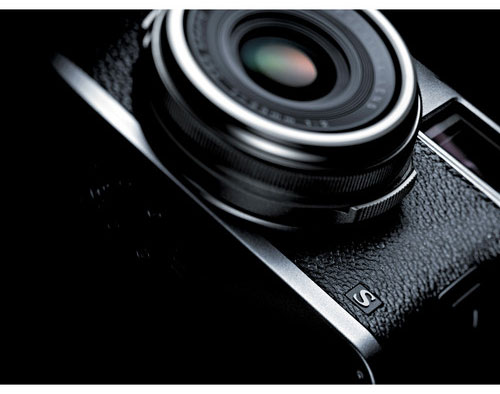 The news is coming from bit low credible source, according to the latest rumors the X200 coming with X-Trans Fullframe sensor in 2014 with advance AF system and In-body image stabilization. The Overall construction of X200 is said to be better than Current Sony RX1R camera (see at Amazon). The news is coming from bit low credible source, according to the latest rumors the X200 coming with X-Trans Fullframe sensor in 2014 with advance AF system and In-body image stabilization. The Overall construction of X200 is said to be better than Current Sony RX1R camera (see at Amazon).
STAY WITH ON FACEBOOK | TWITTER | GOOGLE+ to get live news + Fuji rumors 24X7.
src-xjrumo
|
KEEP THIS BLOG ALIVE - Support New Camera Buy Canon Lenses, Buy Music CD or Digital Camera at amazon it helps this site, and you do not pay anything extra, it is just a way to help support this site.

|
 Sony A7 vs Sony A7r comparison review – Just few days ago Sony announced A7 and A7r fullframe mirrorless camera with excellent core specification, Sony is shaking the camera world from 2012 by announcing class leading innovative products like X series compact cameras, smartphone attachable lens-Style Camera and now FF Mirrorless.
Sony A7 vs Sony A7r comparison review – Just few days ago Sony announced A7 and A7r fullframe mirrorless camera with excellent core specification, Sony is shaking the camera world from 2012 by announcing class leading innovative products like X series compact cameras, smartphone attachable lens-Style Camera and now FF Mirrorless. #4 Fast top continuous shooting speed in A7: Due to less resolution in A7 the image processor is able to process more files at a given time compared to A7r.
#4 Fast top continuous shooting speed in A7: Due to less resolution in A7 the image processor is able to process more files at a given time compared to A7r.











